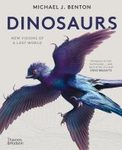![Ordovician Rhynchonelliformean Brachiopods from Co. Waterford, SE Ireland Ordovician Rhynchonelliformean Brachiopods from Co. Waterford, SE Ireland]()
Click to have a closer look
About this book
Customer reviews
Related titles
About this book
The Irish Leinster Terrane, Co. Waterford, SE Ireland, has traditionally been associated with a palaeogeographical position close to East Avalonia, but a number of recent studies on, for example, zircon geochronology, geochemistry, isotope analyses and tectono- and lithostratigraphy strongly point to a Ganderian affinity. Together with the Monian Composite, Bellewstown, Grangegeeth, Central Newfoundland and Miramichi terranes, the Leinster Terrane formed part of the leading edge of Ganderia in association with the Popelogan-Victoria arc several hundred kilometres north of Avalonia
during the Ordovician. The present faunal data together with the Ganderian studies and compiled palaeomagnetic data from other authors form the basis of new palaeobiogeographical reconstructions of the mid Darriwilian and early Sandbian palaeoplate configurations in the south Iapetus Ocean.
The generic composition of the Tramore and Dunabrattin Limestone formations contains only few endemic forms and is dominated by a mix of taxa that originated in other parts of the world during the Early–early late Ordovician including low-latitude Laurentia, high-latitude peri-Gondwana and mid latitude Baltica. All the Ganderian terranes and East Avalonia contained mixed faunas during the mid Darriwilian–early Sandbian indicating that these sites together occupied a mid latitudinal position comprising settling grounds for taxa from the surrounding, widely dispersed high-, low- and mid-latitude palaeoplates. The Tramore and Dunabrattin limestones furthermore contain brachiopod species that migrated to the Leinster Terrane from East Avalonia, Baltica, Laurentia and peri-Laurentia during the late Darriwilian–early Sandbian confirming the Ganderian terrane’s close relationship with the other Iapetus-bordering sites.
Oceanic wind-driven surface currents were the primary factor determining brachiopod dispersal in the Darriwilian, when the majority of taxa were associated with shelfal biofacies. The brachiopod migrational patterns reported for the Darriwilian in the present investigation together with the Mid-Ordovician synthetic ocean surface circulation models form the basis of revised models of oceanic surface current flow for the early and late Darriwilian, respectively. The gracilis drowning diminished brachiopod provinciality in the early Sandbian, and the number of reported brachiopod provinces was reduced from five to four. The mid-latitude Celtic and Baltic provinces were thus obliterated and replaced by the combined Anglo-Welsh–Baltic Province.
A total of 20 rhynchonelliformean hrachiopod genera and 22 species are described from the upper Darriwilian–lower Sandbian Tramore and Dunabrattin Limestone formations (Leinster Terrane). Seven of these are new species and include Atelelasma longisulcum n. sp., Colaptomena auduni n. sp., Dactylogonia costellata n. sp., Hesperorthis leinsterensis n. sp., Howellites hibernicus n. sp., Isophragma parallelum n. sp. and Platystrophia tramorensis n. sp. as well as one new genus Hibernobonites n. gen. and the earliest recorded occurrence of a Tetraphalerella-like genus in the lowermost part of the Tramore Limestone.
Customer Reviews














































